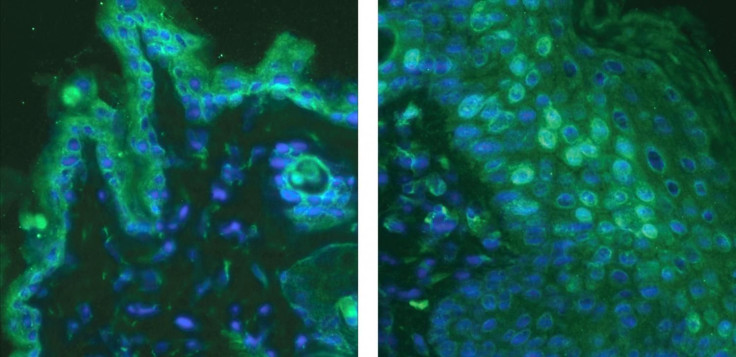Poison Ivy Relief? Scientists Stop Itchy Rash By Blocking Skin Protein

Putting mind over matter could relieve the itch of poison ivy, but people short of the tremendous willpower necessary to overcome insatiable itch may soon be able to rely on a new medicine.
Scientists at Duke University Health System and Zhejiang Chinese Medical University found the protein in the skin that triggers itchiness when allergic people are exposed to poison ivy, poison sumac and poison oak, according to a study in Proceedings of the National Academy of Sciences. They were able to block that protein using an antibody which reduced both inflammation and scratching in mice by halting processes that tell the brain that the skin is itchy.
They were also able to relieve the mouse’s itch through another avenue: by blocking the receptor for that skin protein IL-33, which is also present in all humans and is involved in immune response, inducing inflammation. Senior author Sven-Eric Jordt said the next step is to see if the rodent results can be replicated in humans.
According to a statement from Duke Health, about 80 percent of people are allergic to poison ivy, specifically its oily sap called urushiol, and suffer from allergic contact dermatitis when they touch it. “Poison ivy rash is the most common allergic reaction in the U.S., and studies have shown that higher levels of carbon dioxide in the atmosphere are creating a proliferation of poison ivy throughout the U.S. — even in places where it wasn't growing before,” Jordt said in the statement. More than 10 million people are affected every year, but in most the allergic reaction is not life-threatening. Still, “when you consider doctor visits, the costs of the drugs that are prescribed and the lost time at work or at school, the societal costs are quite large.”
The Mayo Clinic says poison ivy rash comes with redness, itching, swelling and blisters about 12 hours to two days after exposure. If a person inhaled smoke from a burning poison ivy plant, they could have trouble breathing. The reaction varies in intensity depending on the amount of contact. “Often the rash looks like a straight line because of the way the plant brushes against your skin,” the Mayo Clinic says. “But if you come into contact with a piece of clothing or pet fur that has urushiol on it, the rash may be more spread out. You can also transfer the oil to other parts of your body with your fingers.” The allergic reaction can last for a few weeks. Complicating matters, scratching the rash to relieve the intense itch could transfer bacteria from under your fingernails and infect the skin.
Although there are remedies to relieve itch, like antihistamines and steroids, those are not always effective. That may be because, according to the study, the skin protein IL-33 “also acts directly on the nerve fibers in the skin, exciting them and telling the brain that the skin is severely itchy.” Blocking that protein may do the trick, however.
Source: Jordt S, Liu B, Tai Y, et al. IL-33/ST2 signaling excites sensory neurons and mediates itch response in a mouse model of poison ivy contact allergy. Proceedings of the National Academy of Sciences. 2016.



























